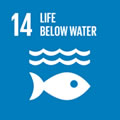Por favor, use este identificador para citar o enlazar a este item:
http://hdl.handle.net/10261/341154COMPARTIR / EXPORTAR:
 SHARE SHARE
 CORE
BASE CORE
BASE
|
|
| Visualizar otros formatos: MARC | Dublin Core | RDF | ORE | MODS | METS | DIDL | DATACITE | |

| Título: | Global biogeography of the smallest plankton across ocean depths |
Autor: | Junger, Pedro C.; Sarmento, Hugo CSIC ORCID; Giner, Caterina R. CSIC ORCID; Mestre, Mireia CSIC ORCID; Sebastián, Marta CSIC ORCID; Morán, Xosé Anxelu G. CSIC ORCID; Arístegui, Javier; Agustí, Susana CSIC ORCID; Duarte, Carlos M. CSIC ORCID; Acinas, Silvia G. CSIC ORCID ; Massana, Ramon CSIC ORCID ; Gasol, Josep M. CSIC ORCID ; Logares, Ramiro CSIC ORCID | Fecha de publicación: | nov-2023 | Editor: | American Association for the Advancement of Science | Citación: | Science advances 9(45): eadg976 (2023) | Resumen: | Tiny ocean plankton (picoplankton) are fundamental for the functioning of the biosphere, but the ecological mechanisms shaping their biogeography were partially understood. Comprehending whether these microorganisms are structured by niche versus neutral processes is relevant in the context of global change. We investigate the ecological processes (selection, dispersal, and drift) structuring global-ocean picoplanktonic communities inhabiting the epipelagic (0 to 200 meters), mesopelagic (200 to 1000 meters), and bathypelagic (1000 to 4000 meters) zones. We found that selection decreased, while dispersal limitation increased with depth, possibly due to differences in habitat heterogeneity and dispersal barriers such as water masses and bottom topography. Picoplankton β-diversity positively correlated with environmental heterogeneity and water mass variability, but this relationship tended to be weaker for eukaryotes than for prokaryotes. Community patterns were more pronounced in the Mediterranean Sea, probably because of its cross-basin environmental heterogeneity and deep-water isolation. We conclude that different combinations of ecological mechanisms shape the biogeography of the ocean microbiome across depths | Descripción: | 15 pages, 7 figures, supplementary materials https://doi.org/10.1126/sciadv.adg9763.-- Data and materials availability: DNA sequences and contextual metadata are publicly available at the European Nucleotide Archive (http://ebi.ac.uk/ena) under accession numbers PRJEB23913 (18S rRNA genes) and PRJEB25224 (16S rRNA genes) for the Malaspina surface dataset; PRJEB23771 (18S rRNA genes) and PRJEB45015 (16S rRNA genes) for the Malaspina vertical profiles; PRJEB45011 (16S rRNA genes) for the Malaspina deep sea dataset; and PRJEB44683 (18S rRNA genes) and PRJEB44474 (16S rRNA genes) for the HotMix expedition. All data needed to evaluate the conclusions in the paper are present in the paper and/or the Supplementary Materials. ASV tables and environmental metadata are publicly available in a permanent Zenodo repository: https://doi.org/10.5281/zenodo.8363877. R-Scripts for calculating the β-NTI and the Raup-Crick metrics are available at (version released 25 February 2015): https://github.com/stegen/Stegen_etal_ISME_2013 | Versión del editor: | https://doi.org/10.1126/sciadv.adg9763 | URI: | http://hdl.handle.net/10261/341154 | DOI: | 10.1126/sciadv.adg976 | E-ISSN: | 2375-2548 |
| Aparece en las colecciones: | (ICM) Artículos (IEO) Artículos |
Ficheros en este ítem:
| Fichero | Descripción | Tamaño | Formato | |
|---|---|---|---|---|
| Junger_et_al_2023.pdf | 1,76 MB | Adobe PDF |  Visualizar/Abrir | |
| Junger_et_al_2023_suppl.pdf | 25,4 MB | Adobe PDF |  Visualizar/Abrir |
CORE Recommender
Page view(s)
27
checked on 29-abr-2024
Download(s)
34
checked on 29-abr-2024
Google ScholarTM
Check
Altmetric
Altmetric
Este item está licenciado bajo una Licencia Creative Commons



